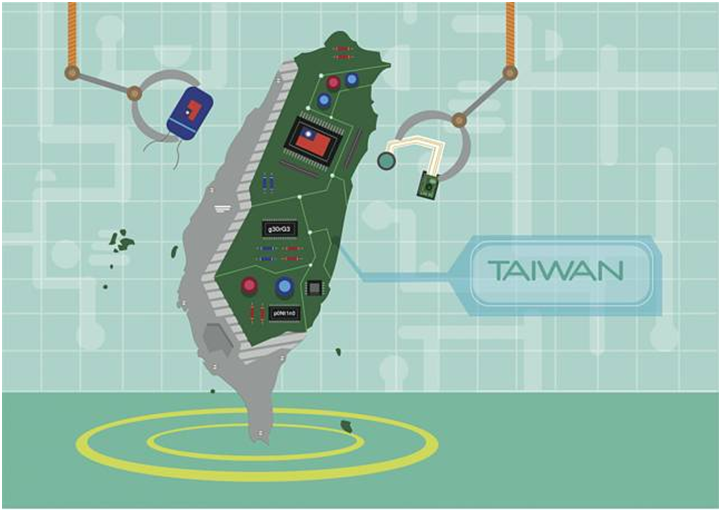
Charles R. Goulding and Preeti Sulibhavi consider 3D printing in Taiwan’s return to domestic supply chain focus.
With deteriorating Taiwan-China relations and U.S. policy concerns, Taiwanese companies are protecting their economy by reshoring substantial portions of their long-standing China-dependent supply chain back home. Taiwan has a $1.3 trillion economy and is particularly strong in the manufacture of electronics and machinery. Taiwanese executives had previously said that their neighbor was a perfect fit for their low-cost needs all the while expanding market share while reducing costs. Taiwanese businesspeople acknowledge that they allowed far too many key components to migrate production to China. Taiwan’s manufacturing sales sector has been declining and the belief is that they have lost their leverage in the value-added product category. In 2006, China overtook the U.S. as the largest country supplier.
A major industrial manufacturing country rarely has a need to reshore so much production. The long-standing offshoring to China occurred before 3D printing hit its stride. This means there is a tremendous catch-up opportunity for Taiwanese companies to use 3D printing for both design and production processes.
Small and mid-size businesses in industries including textiles, shoes, furniture, car parts and machine tools, some of which had shifted almost all their business activities to China in recent years, have also experienced supply chain pressure. All of these sectors have 3D printing options available to them as we discussed in recent Fabbaloo articles.
Companies engaged in 3D printing activities and similar developments may be eligible for the Research and Development Tax Credit.
The Research & Development Tax Credit
Whether it’s used for creating and testing prototypes or for final production, 3D printing is a great indicator that R&D Credit eligible activities are taking place. Companies implementing this technology at any point should consider taking advantage of R&D Tax Credits.
Enacted in 1981, the now permanent Federal Research and Development (R&D) Tax Credit allows a credit that typically ranges from 4%-7% of eligible spending for new and improved products and processes. Qualified research must meet the following four criteria:
- Must be technological in nature
- Must be a component of the taxpayer’s business
- Must represent R&D in the experimental sense and generally includes all such costs related to the development or improvement of a product or process
- Must eliminate uncertainty through a process of experimentation that considers one or more alternatives
Eligible costs include US employee wages, cost of supplies consumed in the R&D process, cost of pre-production testing, US contract research expenses, and certain costs associated with developing a patent.
On December 18, 2015, President Obama signed the PATH Act, making the R&D Tax Credit permanent. Since 2016, the R&D credit has been used to offset Alternative Minimum Tax (AMT) for companies with revenue below $50MM and, startup businesses can obtain up to $250,000 per year in payroll tax cash rebates.
Conclusion
The 3D printing industry can help Taiwanese businesses manage this important value-added supply chain transition. It is crucial for Taiwan to retain its economic vitality and 3D printing should have a major role to play.
